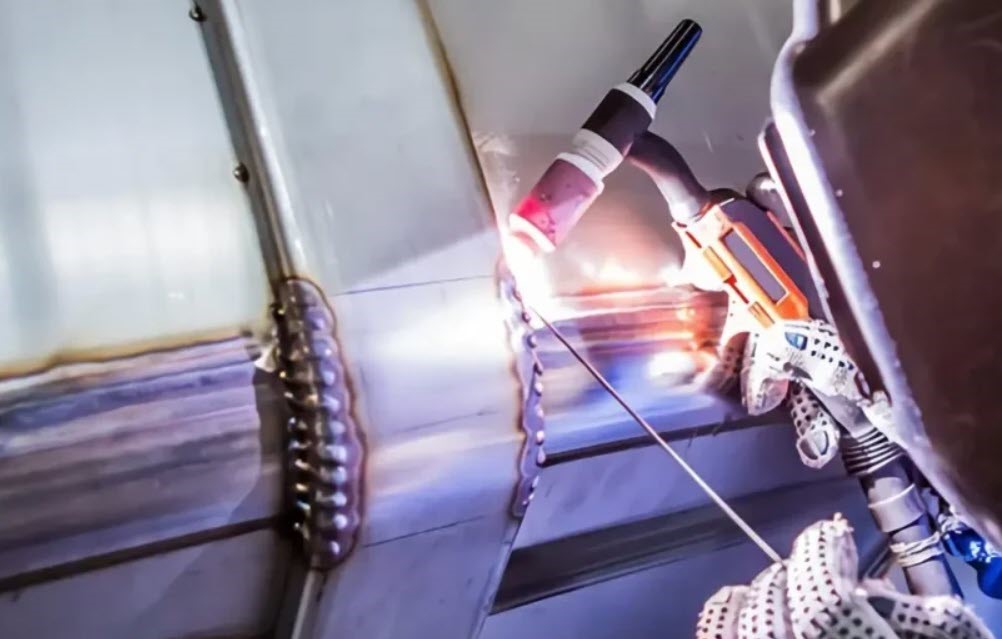Introduction
Boatyard tough: Durable is not an option – it’s a necessity in the harsh environment of marine construction and repair. Due to the marine environment, hull structures to shipbuilding, off- shore platform processing module to other offshore structures all experience common corrosion problems of salty water, and withstand high pressure etc. at the same time. One of the important substrates, which is still valuable and necessary to remain strong and resistant to corrosion, is * ลวดเชื่อมสแตนเลส- https://www.udo.co.th/product/detail/yawata-308l-16 * or * stainless steel welding wire*. In this post, we take a look at how this material improves performance and durability when used for marine welding, and why it remains such a popular options for professionals across the globe.
The Challenges of Marine Welding
Welding under marine conditions brings specific needs that differ from those encountered in other sectors. Saltwater is notoriously corrosive, and the compound can over time weaken the integrity of metals. Furthermore, maritime structures are exposed to cycling, temperature variation and bio-fouling that can degrade traditional materials and their joins.
To combat these degenerative responses, the compounds employed in marine welding should exhibit resistance to corrosion, mechanical strength, and structural stability in submerged and surface (exposure)-out-of-water conditions. This is where ลวดเชื่อมสแตนเลส helps.
Why Stainless Steel Welding Wire is Ideal for Marine Use
There are several features about stainless pipe wire which makes it great to use in welding:
1. Superior Corrosion Resistance
The most significant feature of ลวดเชื่อมสแตนเลส is that it is not susceptible to rust. Molybdenum containing grades such as 316L stainless steel will help prevent pitting (facet erosion ie. small pin holes). Key to pitting resistance in seawater is the molybdenum content. This characteristic strongly decreases the occurrence of pitting and crevice corrosion, prolonging the life span of marine constructions.
2. High tensile strength And toughness.
Stainless steel welding wire exhibits excellent mechanical properties, namely tensile strength and toughness, particularly in the presence of mechanical stress and vibrations. It also provides that welds can take the applied loads from waves, currents, and operational equipment.
3. Thermal Stability
Welded stainless steel’s strength and corrosion-resistant properties can be employed in any size of construction for marine service where there is temperature variation (which is everywhere). This thermal durability is required to protect the structural integrity of vessels and rigs faced with the searing heat of the tropics, and the chill of ocean currents.
4. This is Suitable for Most Occasion
ลวดเชื่อมสแตนเลส is Compatible with great variety of stainless steel base metals for multi applications such as hull repairs, piping systems, underwater components and deck structures. Its multiple function allows less exchange of welding consumables, which means less finishing and more efficiency.
Applications of Stainless Steel Welding Wire in Marine Industry
The marine industry depends on stainless steel welding wire for:
- Shipbuilding & Repair: From hull plates to ballast tanks, *ลวดเชื่อมสแตนเลส** welds components exposed to seawater 24/7.
- Offshore Platforms: For both oil rig and offshore wind turbines, avoiding premature failure in risers, ladders, handrails, and processing systems means using stainless steel welds.
- Marine Infrastructure: Coastal and subaquatic conditions are no challenge for the stainless steel welding used in bridges, piers and harbor installations.
- Subsea Equipment: Equipment that operates beneath the surface of the sea, like both pipelines and ROV frames also require strong welds to prevent leaks and breakdowns.
How to Use Stainless Steel Welding Wire in Marine Applications
So, to get the most of ลวดเชื่อมสแตนเลส marine welders should adhere to some top tips:
- Pick the Proper Grade: Choose the right stainless steel grade for corrosion resistance, such as 316L or duplex stainless steel.
- Clean Surfaces: Do not weld over contaminants that can cause inclusions or porosity that could be detrimental to corrosion resistance.
- Low Heat Input Techniques: Low heat input helps reduce distortion and preserve the metallurgical integrity of the weld.
- Prevent Galvanic Corrosion: Do not weld stainless steel to carbon steel non-insulated, Avoid causing electrochemical reactions in the seawater.
Future Outlook: Sustainability and Innovation
With the increasing popularity of environmentally friendly marine construction, the function of stainless steel welding wire is becoming more and more significant. It is also an eco-friendly option due to its recycle-ability and durability. Further improvement in the performance of ลวดเชื่อมสแตนเลส can be anticipated due to the advancements in the development of the alloy and welding automation, which could provide a safer and the more effective operation in the marine industry.
Conclusion
When it comes to marine welding, choosing the correct materials is essential for the long-term protection of the vessel in aggressive environments. Stainless Steel Welding Wire is even more specialized offering corrosion resistance, strength and uniformity in strength in a variety of applications by the marine industry. For all your ocean-bound structures, ships, or underwater applications you need to maintain, search no more – stainless steel welding wire is still the best welding/strength filler wire and is still the tried and true for the toughest, maritime welding tasks.
Through selecting the perfect kind of ลวดเชื่อมสแตนเลส- https://www.udo.co.th/product/detail/yawata-308l-16 and learning best practices, marine welders can prolong the life of your projects, lower maintenance costs, and you can hold the safety and performance… above and below the waterline.

